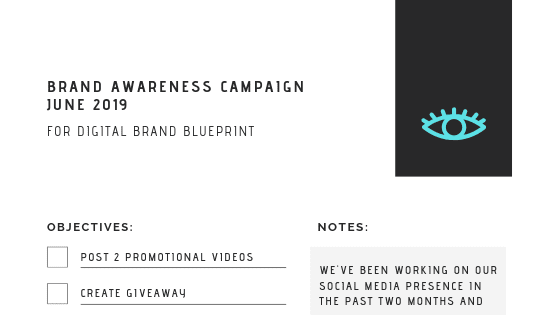How to Create a Content Marketing Calendar
A recent report about Internet Trends done by Klein Perkins shows that adults now spend an average of 5.9 hours on digital media daily, compared to 2.7 hours, in the year 2009. The average consumer also uses more than one device to access digital media.
Entertainment, communication, and learning are just a few of the things from the long list of digital content consumption.
That means that your business has an opportunity to take advantage of the content consumption wave as a way to attract new people, by producing content that appeals to their needs.
Original content is the new competitive edge for businesses.
Sometimes, for brands that must produce a large number of content pieces, it can become hectic to keep track of everything.
That is why in this article we talk about creating a content calendar where you can organize content output and create a consistent schedule.

What is a content calendar?
A content calendar is a way of planning, organizing, and scheduling specific pieces of content that a brand will produce for its audience during a given period.
It can include detailed information about the content format, time of posting, channels and so on.
A calendar by itself is not a content marketing strategy, but it should be a part of the overall strategic plan for your brand.
Why do you need a content calendar?
A content calendar can help you stay organized and consistent with the content you post. It makes it easier for you as an individual or a team to keep track of everything that you need to create, as well as when and where it should go out.
Consistency is also essential when building a digital presence, and the calendar will help you plan and stick to a consistent schedule for posting.
How to Start Building a Content Calendar
First, we will define all relevant events for your content strategy, such as goals or campaigns. Moving on, we will prepare a monthly action plan for each event, such as the post format, distribution channel and time.
That can work for long or short periods, but I recommend creating a calendar monthly.
1. Set Content Marketing Goals
In the previous article, we talked about how you can set goals for your content marketing strategy. It is critical to have a summary of what you’re trying to achieve with the content you post in the long-run (this year, half-year or quarter).
In short, the goals you set out should have the following characteristics:
Specific: Don’t be vague with the set-up, create specific goals that are realistic and accomplishable, depending on the number of people on your team, available budget, time constraints and so on.
Targeted: The people that interact with your content are a significant part of goal setting. Create customer profiles that sum-up the people that you’re targeting.

Measurable: Set key performance indicators that you will track on the content you post, to measure progress and results of goals.
Actionable: Connect specific actions to each goal, like the number of web articles or social posts. You can later insert single posts into your calendar on specific days.

2. Include Promotional Campaign Objectives
Campaigns work similarly to goals. You should have a set of specific objectives that you connect to each campaign. Campaigns are created for things such as a product launch, increasing brand awareness, introducing new services and so on.

The main difference is that campaigns are usually more strategic than goals, and they should be run apart from regular content posting.
3. Mark Important Events
Events that will affect your content calendar are also part of organizing the posting schedule.
A big happening, like the winter holiday season, can play a part in the content that you produce, especially if the market you’re in closely relates to a specific event.

For example, sport websites should take advantage of huge sporting events such as the Superbowl. Flower shops should consider Mother’s Day, and so on.
Your company may also organize an event that will affect your content marketing strategy, but that usually deserves a campaign of its own.
4. Consider Channels and Times to Post
Each goal, event or campaign is different, so think about the channels and the times you will post content that relates to each.
Channels may include websites, e-mail newsletters, or any social media platform that your brand is a part of.
Each platform may also require different types of content, for example, Twitter is the most suitable one for status updates. Instagram and Pinterest are tailored for visual content, and so on.

The best time to post can also vary across different platforms, and there is a lot of research about what are the best days and times to post. However, with my experience, I can say that it all depends on way too many factors and there is no magic formula as to when is the best time to post.
You can take a more strategic approach and think about the best way to post according to your goal or campaign.
For example, if your course starts next month think about how many times per week you should promote it on your social media when to announce it first, what days of the week are people most likely to consider buying the course and details like that.
5. Schedule posts according to Goals, Campaigns, and Events
Once you have figured out all the goals and events around your business, you can start putting it all together by scheduling specific post and actions for each day of the month.
If you’ve followed the steps so far, you should have a list of all the things you want to accomplish this month and an empty calendar. Start inserting specific posts in all the empty slots and slowly fill them all out.

You can personalize your calendar in many ways, of course, you can add more information about each day that you think you need, you can color-code each different platform, or add different symbols to columns.
What to do next?
Of course, not everything can be scheduled and planned out perfectly. You should always leave some room for improvised posts that you share at the spur of the moment.

Share this with your friends?
